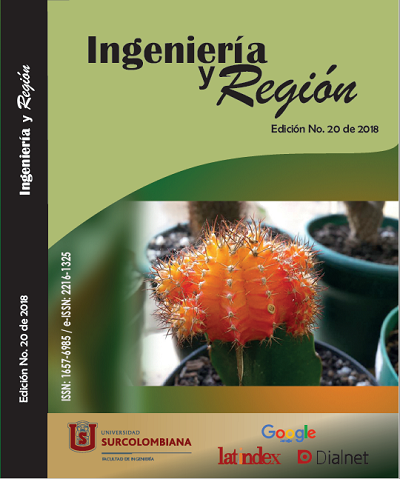Assessment of the post-harvest quality and conservation of spring onions submitted to hydrocooling
##plugins.themes.bootstrap3.article.main##
Spring onions are part of the Alliaceae family and is one of the most used and traded vegetables in the world, with an essentially seasoning nature. However, they present high perishability and susceptibility to water loss, which reduces the useful life of the product, both on shelves (benefit for the producer) and in refrigerators (benefit for the consumer). The hydrocooling method, which consists of the immersion of the product in a mixture of water and ice, is a good alternative for field heat removal and favouring the humidity of vegetable products, besides being associated to its sanitation process. Considering what has been said, this paper aimed to check the efficiency and the effects of hydrocooling on the post-harvest quality and conservation of spring onions, through analyses of quality parameters such as fresh mass loss, total soluble solids (TSS), pH, total titratable acidity (TTA), chlorophyll index, TSS/TTA ratio, respiration, darkening index, and biospeckle through the moment of inertia method, aiming to determine the best hydrocooling application time at 5 ºC. Hydrocooling showed efficient, mainly on the mass loss control and on the commercial visual aspects, with 10 minutes as the most indicated application time
Downloads
##plugins.themes.bootstrap3.article.details##
Carvalho, C. R. L., Mantovani, D. M. B., Carvalho, P. R. N., Moraes, R. M. M., 1990. Análises químicas de alimentos. Campinas: ITAL, 121p.
Chitarra, M. I. F., Chitarra, A. B., 2007. Processamento mínimo de alface. In: MORETTI, C. L. (Ed.). Manual de Processamento Mínimo de Frutas e Hortaliças. Brasília: SEBRAE. p. 299-342.
Kalbasi-Ashtari, A., 2004. Efeccts of posthaverst pre-colling processes and cyclical treatment on the physic. Chemical properties of ‘’ ked haven perchs’’ and ‘’ Shahmavch Pears’’ during cold storage. Agricultural engineeiring international: the CIGR journal of a cientific. Research and development, Florida, v.6.
Kanlaynarat, R., Acedo, Jr., 2009. Horticultural chain management for countries of asia and pacific region: a training package. food and agriculture organizations of the united nations. Regional Office for Asia and The Pacific. Bangkok.
Nascimento, G. A. S., Sanches, G. A., Moreira, S. G. E., Cordeiro, M. A. C., 2017. Tratamento hidrotérmico na conservação e qualidade pós-colheita de alface. Revista Trópica – Ciências Agrárias e Biológicas. p.65-76, v.09, n.01, 2017. ISSN 1982-4881. Consultado em 11 de fevereiro de 2019. http://www.periodicoseletronicos.ufma.br/index.php/ccaatropica/article/view/3454/4115
Oliveira, L. S., 2012. Efeito do hidroresfriamento, da temperatura e da rehidratação na conservação pós-colheita do coentro.Viçosa, MG – Brasil. Consultado em 11 de fevereiro de 2019. http://www.scielo.br/scielo.php?pid=S0102-05362015000400448&script=sci_abstract&tlng=pt
Palou, E., López‐Malo, A., Barbosa‐Cánovas, G. V., Welti‐Chanes,¸ J., Swanson, B. G., 1999. Polyphenoloxidase activity and color of blanched and high hydrostatic pressure treated banana puree. Journal of Food Science, v. 64, n. 1, p. 42-45. DOI: https://doi.org/10.1111/j.1365-2621.1999.tb09857.x
Petry, H. B., Koller, C. O., Bender, J. R., Schwarz, S. F., 2012. Qualidade de Laranjas ‘valência’ produzidas sob sistemas de cultivo orgânico e convencional. Rev. Bras. Frutic., Jaboticabal - SP, v. 34, n. 1, p. 167-174. Consultado em 11 de fevereiro de 2019. http://www.scielo.br/pdf/rbf/v34n1/v34n1a23.pdf
Sanches, G. A., Silva, B. M., Moreira, S. E. G., Cordeiro, M. C. A., 2015. Comportamento fisiológico pós-colheita de cultivares de rúcula minimamente processadas. Acta Iguazu, Cascavel, v.4, n.1, p. 91-105. ISSN: 2316-4093. Consultado em 11 de fevereiro de 2019. http://saber.unioeste.br/index.php/actaiguazu/article/view/13281
Schneider, C. A., Rasband, W. S., Eliceiri, K. W., 2012. NIH Image to ImageJ: 25 Years of Image Analysis. Nat. Methods 9: 671-5. Consultado em 11 de fevereiro de 2019. https://www.ncbi.nlm.nih.gov/pubmed/22930834
Silva, A. P. G., Borges C. D., Miguel, A. C. A., Jacomino, P. A., Mendonça, B. R. C., 2015. Características físico-químicas de cebolinhas comum e europeia. Campinas, v. 18, n. 4, p. 293-298, out./dez. DOI: http://dx.doi.org/10.1590/1981-6723.3015
Souza, M. T. A., Sanches, A. G., Moreira, S. G. E., Cordeiro, C. A. M., 2017. Eficiência do hidroresfriamento na conservação e qualidade pós-colheita de coentro (Coriandrum sativum L.). Revista Trópica – Ciências Agrárias e Biológicas. p.32-40, v.10, n.01, ISSN 1982-4881. Consultado em 11 de fevereiro de 2019. http://www.periodicoseletronicos.ufma.br/index.php/ccaatropica/article/view/3451
Teixeira, D. A., Gomes, J. A. O., Bonfim, F. P. G., Pardo, P.I., Mayobre, M. T.,2016. Técnicas de conservação pós-colheita para o manjericão. Rev. Bras. Pl. Med., Campinas, v.18, n.1, p.168-171, DOI: http://dx.doi.org/10.1590/1983-084X/15_007
Travassos, A. P., Silva, N. E., Pedroza, C. R. R., Soares, M. C. R. D., 2017. Hidroresfriamento na conservação pós-colheita de cebolinha. Revista Brasileira de Agropecuária Sustentável (RBAS), v.7, n.2, p.46-51. DOI: 10.21206/rbas.v7i2.396


















